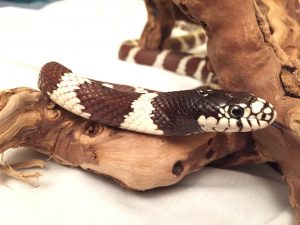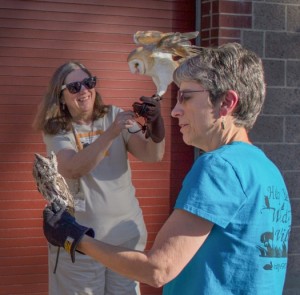
Meet Our Wildlife Ambassadors
Wildlife ambassadors are non-releasable wild animals that help advance the cause of wildlife education and conservation by their numerous appearances throughout the community at schools, private and public events. To be able to see them up close is an unforgettable experience. For a nominal fee, you may schedule a presentation with the Ambassadors and their handlers.
You can help our ambassadors spread the word about wildlife conservation by making a tax-deductible donation to Wildlife Rehabilitation & Release. Please be aware that keeping wild animals in captivity requires permits from both U.S. Fish & Wildlife and California Department of Fish & Wildlife. It is illegal to possess a wild animal unless you are a permitted wildlife rehabilitator/handler or falconer.
To schedule a presentation to your organization or classroom with the Wildlife Ambassadors, contact the Education Chair. A fee of $100 is normally requested to help pay for the care of the ambassadors.
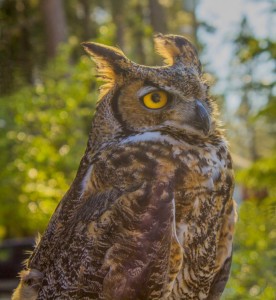 Great Horned Owl (Chester)
Great Horned Owl (Chester)
Chester was found hanging on a barbed-wire fence in 2006 by a Yuba County Animal Control officer. It is presumed that he flew into the fence while hunting in a field and may have hung there for two days before being found. While thrashing around to escape, he severely damaged his wing and scratched his right eye. A veterinarian tried to fix his elbow but, unfortunately, it didn’t heal well enough for him to fly silently so that he could hunt in the wild. Both Chester’s damaged wing and eye determined him to be non-releasable. Chester is very intelligent. Due to his calm and good-natured demeanor, he became a Wildlife Ambassador. He is a very popular and regularly visits many classrooms and attends many events in the area.
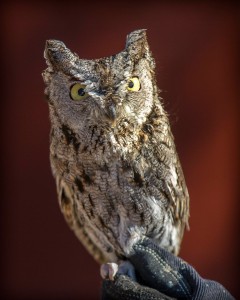 Western Screech-Owl (Kajika)
Western Screech-Owl (Kajika)
Kajika was hit by one car and narrowly escaped a second. The finder realized he was NOT a pinecone and pulled over to save him. He arrived in May of 2010, with major head trauma. A veterinary exam revealed that Kajika suffered damage to his eyes and both eardrums had burst resulting in deafness. Although some sight and hearing eventually returned, it was determined that Kajika could not survive in the wild. He showed a good temperament for living in captivity and became a Wildlife Ambassador with WRR. The name “Kajika” comes from the American Indian language meaning “walks in silence.” Kajika and his wild counterparts are often mistaken for nestling owls because of their size.
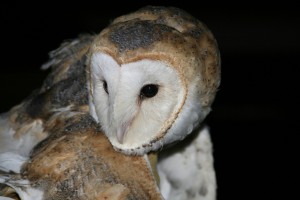 Barn Owl (Steamer)
Barn Owl (Steamer)
In the winter of 2011, a tiny nestling Barn Owl was found in a hay barn along with two dead siblings. What saved his life was landing in a fresh “cow pie.” The little owl was fondly named “Steamer.” Young Barn Owls typically have ravenous appetites. But Steamer’s fall caused injuries to his wing and abdomen, so he had to be enticed to eat at first with little bits of mice. Infection in the wing required a course of antibiotics which secondarily caused some feather damage. Steamer looked a bit scraggly for a while until he grew into his juvenile plumage. An incredible amount of love and care went into helping Steamer grow into a normal and healthy Barn Owl. Unfortunately, Steamer’s difficult start in life resulted in a permanent wing injury and not-so-perfect feathers, making him non-releasable. For a Barn Owl, Steamer displayed a relatively calm personality, qualifying him to be a good candidate as a Wildlife Ambassador. Steamer is now a handsome adult Barn Owl who lives his life of teaching many people about the value and beauty of his species.
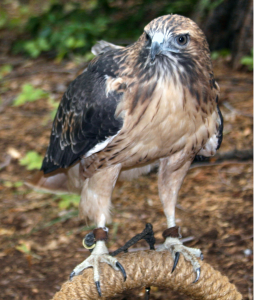 Red-tailed Hawk (Skye)
Red-tailed Hawk (Skye)
Skye, a “light morph” female Red-tailed Hawk, was transferred to WRR through the Ojai Raptor Center, just before Christmas 2012. She was found in Camarillo, near the Pacific Coast Highway, close to an Air Force Base. She had been shot. The bullet shattered the radius in her wing and although the bone has healed, the wing cannot fully extend. Sadly, Skye will never be able to fly well enough to sustain herself in the wild.
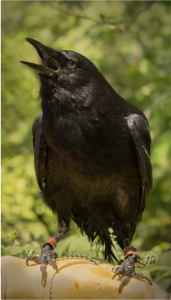 American Crow (Winston)
American Crow (Winston)
Winston came to WR&R in October 2007, from Davis via the Lindsay Wildlife Museum where he was deemed non-releasable due to his habituation to people. He had been found (or taken) by college students who intended for him to become a “pet”. They then abandoned him at the end of the school term. Lindsay Museum transferred Winston to Wildlife Rehabilitation and Release where he became a wildlife ambassador.
Winston is friendly and social around people, especially women and young children. His loud cawing at public events, often makes him the center of attention. Because crows are highly intelligent and social animals, they do not do well being alone and need items to keep their lives enriched. Something as simple as a shiny button will keep Winston entertained for a while. Crows in the wild have been observed sliding on their bellies down roofs in the snow. They are amazing animals!
Common King Snake (Oreo)
